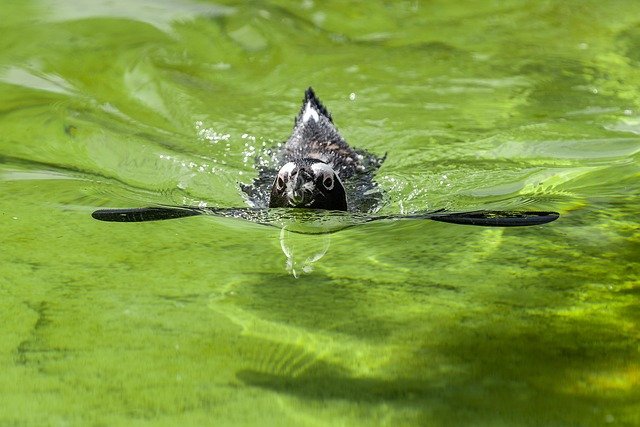**Title: "The Social Lives of Penguins: Understanding Their Complex Communication and Social Structures"** **

The Social Lives of Penguins: Understanding Their Complex Communication and Social Structures
Penguins, often seen waddling across icy landscapes, are not just adorable creatures; they are also fascinating social animals with complex communication systems and intricate social structures. In this post, we will explore the social lives of these remarkable birds and delve into how they interact with one another in their harsh environments.
Communication: A Symphony of Sounds
Penguins are known for their vocalizations, which play a crucial role in their social interactions. Each species has its own unique set of calls, allowing them to convey different messages. Here are some key aspects of penguin communication:
Vocal Calls: Penguins use a variety of sounds to communicate. From the distinctive braying of the African penguin to the trumpeting calls of the emperor penguin, these vocalizations serve purposes such as attracting mates, signaling alarm, and maintaining group cohesion.
Visual Signals: In addition to vocalizations, penguins also rely on visual cues. Body postures, flipper movements, and even head tilts can convey messages about dominance, submission, or readiness to mate.
Chemical Signals: Recent studies have suggested that penguins may also utilize scent as a form of communication, particularly in identifying mates and offspring.
Social Structures: The Importance of Community
Penguins are highly social animals that thrive in colonies, often comprising thousands of individuals. Their social structures are characterized by several key features:
Breeding Colonies: Most penguin species gather in large colonies during the breeding season. These colonies provide protection from predators and help ensure the survival of chicks. The social dynamics within these colonies can be complex, with established hierarchies and relationships.
Cooperative Parenting: Many penguin species exhibit cooperative parenting behaviors, where both parents take turns incubating eggs and feeding chicks. This teamwork is vital for the survival of their young in the harsh conditions of their habitats.
Social Bonds: Penguins form strong bonds with their mates and other colony members. These relationships are reinforced through mutual grooming and vocal interactions, fostering a sense of community and support.
The Impact of Environment on Social Behavior
The extreme environments in which penguins live, such as the icy shores of Antarctica or the rocky coasts of South America, significantly influence their social behaviors. Adaptations to these environments have led to unique social strategies:
Predator Awareness: In the face of predators like seals and skuas, penguins must remain vigilant. Their social structures help enhance group vigilance, as individuals can alert others to potential threats.
Resource Sharing: In areas where food is scarce, penguins may rely on their social networks to share information about feeding locations, enhancing their chances of survival.
Conclusion
The social lives of penguins are a testament to the adaptability and resilience of these remarkable birds. Their complex communication systems and social structures not only facilitate survival in harsh environments but also highlight the importance of community in the animal kingdom. As we continue to study these fascinating creatures, we gain valuable insights into their behavior and the ecological roles they play in their habitats.
Whether you’re a penguin enthusiast or simply curious about the natural world, understanding the social lives of these birds enriches our appreciation for the diversity of life on our planet. Let’s continue to celebrate and protect these incredible animals and their habitats!

Upvoted! Thank you for supporting witness @jswit.